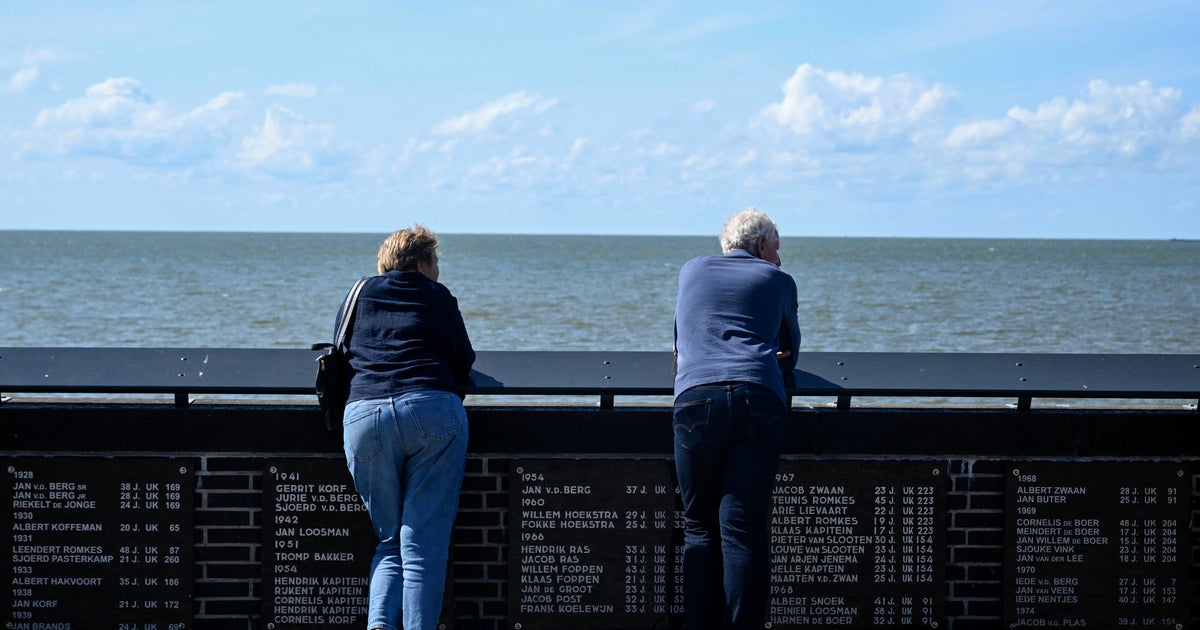Useful information
Prime News delivers timely, accurate news and insights on global events, politics, business, and technology
Useful information
Prime News delivers timely, accurate news and insights on global events, politics, business, and technology

Jan van Den Berg looks at the sea where his father disappeared seven decades ago, lost in a storm a few days before his birth. Now 70 years, he clings to the hope of even finding the smallest fragment of his father’s remains.
In Urk, a fishing village in the north of the Netherlands, the sea has long been the soul of families, but has often taken loved ones.
Some bodies never appeared. Others landed in German or Danish coasts and were buried in nameless tombs.
Despite the tragedy, Van Den Berg, the last six children, became a fisherman like his brothers, challenging his mother’s terror that the North Sea would also claim his children.
“We never found his body,” he told AFP in a low voice, muttering under the edge of his hat.
But after decades of uncertainty, advances in DNA technology and artificial intelligence have given Van den Berg renewed hope.
Researchers can now match the remains with living relatives with greater precision than ever, offering families expected responses and the opportunity to finally cry properly.
Nicolas Tucat/AFP through Getty Images
“Many families still look at the main door, hoping that their loved one is going through it,” said Teun Hakvoort, a Urk resident that serves as a spokesman for a new base dedicated to locating and identifying lost fishermen in the sea.
“All the sunken ships have been mapped. Using modern technology, we observe the weather and currents at the time of shipwreck to estimate where fishermen could have taken to land,” said the 60 -year -old.
The Foundation, Identiteit Gezocht (sought -after identity), aims to list all unknown graves on the coast of the North Sea, hoping to identify remains.
New searches already have fruit. Recently a body was exhumed in Schiermonnikoog, a small island north of the Netherlands, and returned to the family.
“This man had been missing for 47 years. After all this time, the DNA and this new working method allowed to discover that Urk came,” said Hakvoort.
Another Hakvoort, Frans Hakvoort, leads the base with the support of his two brothers in Urk, a united Protestant community where certain surnames frequently return.
The three men, who have lost a relative in the sea, dedicate their free time to look for the disappeared.
“With AI, we look for press articles published after a land on land, possibly in specific circumstances,” said Frans Hakvoort, 44.
“We enter all this information in a database to see if we can establish a link. If so, we contact local authorities to see if they can exhume the body.”
The Netherlands lead to other northern sea countries to identify the disappeared, said, with approximately 90 percent of the unknown exhumed organisms and all DNA profiles stored in a European database.
Given the usual fishing areas and the prevailing currents, URK fishermen are more likely to be buried in German or Danish coasts, he said.
The Foundation has asked the public to identify unknown tombs in Germany and Denmark.
“Denmark and Germany in particular are of great importance at this time, because we hope that relatively many fishermen have taken to land there. All the aid is welcome, we also want to attract tourists,” Frans Hakvoort He told Het Ukerland to the newspaper.
The Foundation works mainly with volunteers and has to settle for the money of donors and sponsors. Hakvoort told us that a public member recently donated 5,000 euros to the cause.
Jan van Den Berg passes his fingers by his father’s name, recorded in a monument with a view to Urk Beach to honor lost fishermen.
The list is long. More than 300 names: parents, brothers and children, with dates that date back to the 18th century.
Among the names there are about 30 fishermen who are never found. Kees Korf, disappeared since 1997 at the age of 19. America Martins, 47, in 2015.
A statue of a woman, her back turned to the sea, represents all these mothers and wives hoping that her loved ones will return.
“My father disappeared during a storm on an frozen October night in 1954,” says Van Den Berg.
“One morning he left the port in the direction of the North Sea. He was not supposed to be long because he was about to be born.”
His uncle, who was also on board, later said his father was on deck when the wild waves turned the boat.
The tragedy still chases the family until today.
“When they pulled the nets on deck with fish, my older brothers always feared that there could be something that seems like a human,” said Van Den Berg.
In 1976, his uncle’s boat disappeared with two of his cousins, aged 15 and 17, also on board.
He was among those who found Jan Jurie’s body, the oldest, four months later.
The others were never found.
“It doesn’t spend a day without thinking about them, all those men, and that is why I participate in searches and I give my DNA, because it is still an open wound,” he said. “I would like to have at least one small bone from my father to place in my mother’s tomb.”